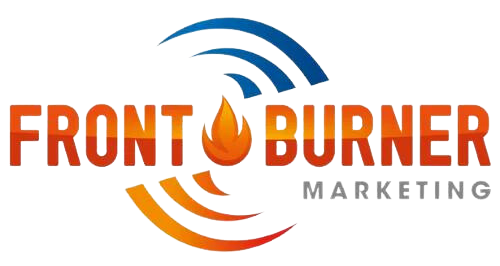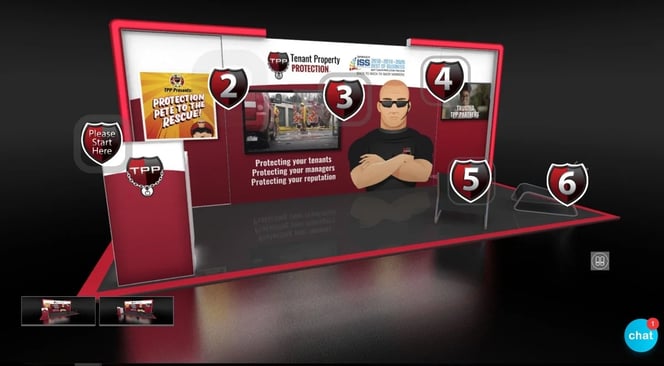
Your largest lead generating trade show just cancelled, so now what? How do you replace getting in front of prospects, meeting with clients and networking with others in your industry without your large in-person event happening? There are several ways to address these new challenges.
Is your trade show offering a virtual event on their platform that they will market? If so, what exactly does that mean?
- What platform will they be using to host the virtual trade show?
- How do they plan on managing audience acquisition? What are they going to do to attract attendees?
- How do they plan to acquire exhibitor buy-in?
- How long will the trade show be live online? Days, weeks, months?
- What is the plan for keynote speakers? They should be short, pre-recorded and available on-demand to achieve the most visibility with visitors.
- What does it cost to exhibit versus the original in-person event?
- What is the cost for attendees to attend the show?
Only after you understand the above answers can you make an educated decision about whether to participate. IF you participate, keep in mind that the same measurable objectives apply for your virtual exhibit as would normally apply to the in-person event.
If your trade show is not offering a virtual event, perhaps you should create your own. Depending on what you want to share with your audience, you could host your own dedicated livestream to an invited audience, or a virtual event complete with registration, sponsors, breakout sessions, recorded keynotes and virtual happy hours. Some companies have even used a single virtual exhibit and have built an event around it. To help determine what your company should do, consider scheduling a virtual brainstorming strategy workshop with your team to discuss:
- What objectives would you want your virtual event to meet/exceed?
- Are 1:1 virtual video meetings with visitors important to you?
- Do you need to feature an interactive livestream demo of your product?
- Do you want a live chat with visitors?
- What kind of content do you have that can be edited for this event? Or do you have the resources to create new content?
- Who would you invite to this event?
Once you determine your objectives, you will need original content that is engaging and thought provoking, but in small bites to keep people engaged and authentic. Create content specific for your virtual show that tells your story visually. Per Victor Torregroza from Intel Corp., “Digital experiences should follow the Hollywood rule of leaving the audiences wanting more. And from the food industry, the experiences should be snackable, and the content should be able to be sliced and diced to be shared across several platforms. Episodic. Engaging. Immersive. Snackable.”
Here’s an example of Tenant Property Protection virtual exhibit. Notice the “shields”. Those are interactive hotspots for their content. The exhibitor guides the visitor through the exhibit by indicating the starting point with a welcome video. Hotspot 4 is where their sponsors created videos and provided information to support TPP. HotSpots can be videos, powerpoints, links to content or pdfs. The Live Chat feature is actually a Pubble hub that allows the exhibitor to view incoming questions, respond, and provides history, statistics and is ultimately their lead generation tool. This exhibitor chose to have their live chat available for blocks of time over the course of a couple days. When the live chat wasn’t active, that feature turns into a contact us messaging tool. A Zoom video chat option is also available for 1:1 interaction. Click on the virtual exhibit image to interact!
Regardless of whether you decide to exhibit with your virtual trade show platform, or create your own virtual event, it’s extremely important to promote your virtual event. Set expectations by clearly explaining what a visitor will receive if they register. Will they be able to watch sessions, ask questions, or will they need to use their video camera? Clearly communicating how your event will function and what they will see will help visitors determine the value of registering and attending. Clearly explain the purpose of the event and reinforce this purpose in all pre-show communications so people remember why they signed up for it. If you partner up with a sponsor for your event, be sure that you give them the tools to promote it to their audience as well. The more people you can get your event in front of, the greater chance of higher attendance.
Keep in mind that all is not lost when proving the value of your virtual event. Online events allow you to easily measure your efforts. From how your visitors registered (Zoom invite, Facebook invite, or Email invite), to what content they watched and for how long, this data can help you breakdown the average time that a visitor spent visiting your event, and the cost per attendee. Depending on how your content is organized on your platform, these metrics can be obtained from Google Analytics, YouTube metrics or Facebook ad metrics, and are important when attempting to show the value of virtual events to management. For TPP, the virtual exhibit example pictured above, they reported that they had 143 visitors who spent 72 minutes on average at their virtual event and had 117 downloaded views of their Trusted Partner Page videos. Usually they are not physically able to see this many people at a trade show, so for them, their event was a success!
In-person events may not return until the Fall of 2021, so what will your company do to pivot during the interim? We all prefer and need human interaction, and companies need to continue to connect and engage with their audience. We all just need to be more creative and open-minded as we navigate how to best make these connections going forward. Are you looking at your options as you consider pivoting your marketing toward a virtual event? Contact us today if you’d like to discuss so we can help!





